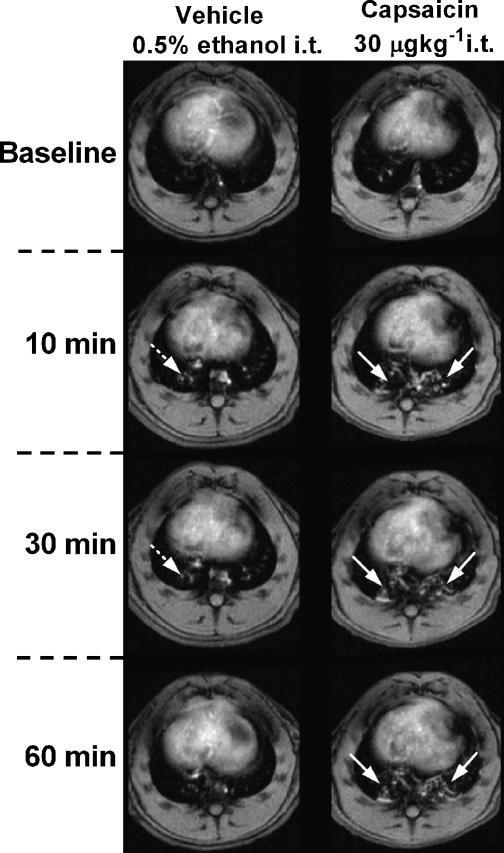Figure 2.
Transverse sections through the thorax of rats treated with either vehicle (0.5% ethanol; 0.2 ml i.t.) or capsaicin (30 μg kg−1 i.t.). The time points are relative to the i.t. challenges. The white arrows denote diffuse signals related to capsaicin-induced mucus release as shown by post-mortem BAL fluid and histological analyses. The dotted white arrows show the appearance of a diffuse signal as a result of a volume of fluid being instilled in the lungs of the vehicle-treated animal.

